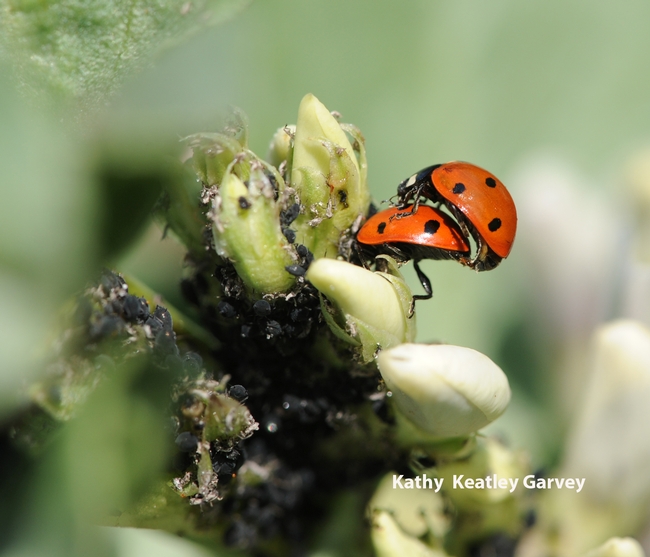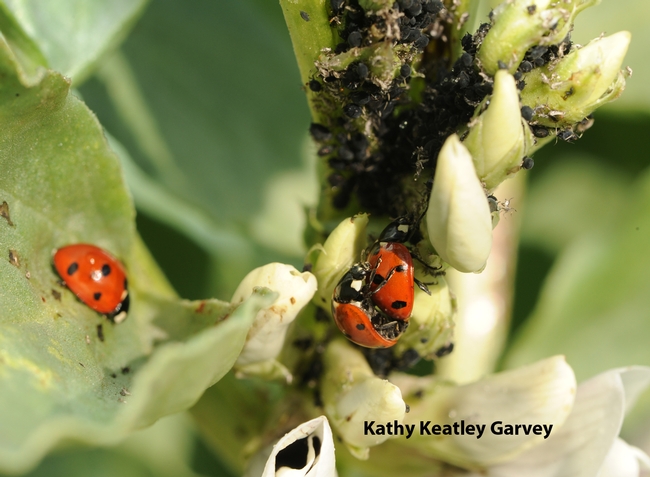The tender shoots of fava bean blossoms are attracting scores of aphids, which suits the ladybugs just fine.
Nothing like an all-you-can-eat aphid buffet.
The site: the Häagen-Dazs Honey Bee Haven, a half-acre bee friendly garden located next to the Harry H. Laidlaw Jr. Honey Bee Research Facility on Bee Biology Road, UC Davis.
The aphid population is growing rapidly. And the ladybugs, aka lady beetles or ladybird beetles, are trying to keep up by (1) increasing the population and (2) increasing their voracious appetites.
Good thing, too!
The ones we saw in the haven today were the seven-spotted ladybugs. Of the more than 5000 described species in the Coccinellidae family, more than 450 are native to North America.
Gary Zamzow of Davis, one of the volunteers at the haven who keeps the site looking beautiful, says he sees the seven-spotted ladybug and the 12-spotted ladybug a lot in Davis. He hopes that the Harlequin ladybug doesn't take over.
He shared these links:
Ladybug Decline Driven by 'Invading' Harlequin (BBC Report from the UK)
The Harlequin Ladybug (Wikipedia)
So, the next time you see a ladybug, see what it is.
Attached Images:

Ladybugs in the fava beans at the Haagen-Dazs Honey Bee Haven, UC Davis. (Photo by Kathy Keatley Garvey)

Note the scores of aphids behind the ladybugs. (Photo by Kathy Keatley Garvey)

Ladybug crawls past some aphids. (Photo by Kathy Keatley Garvey)